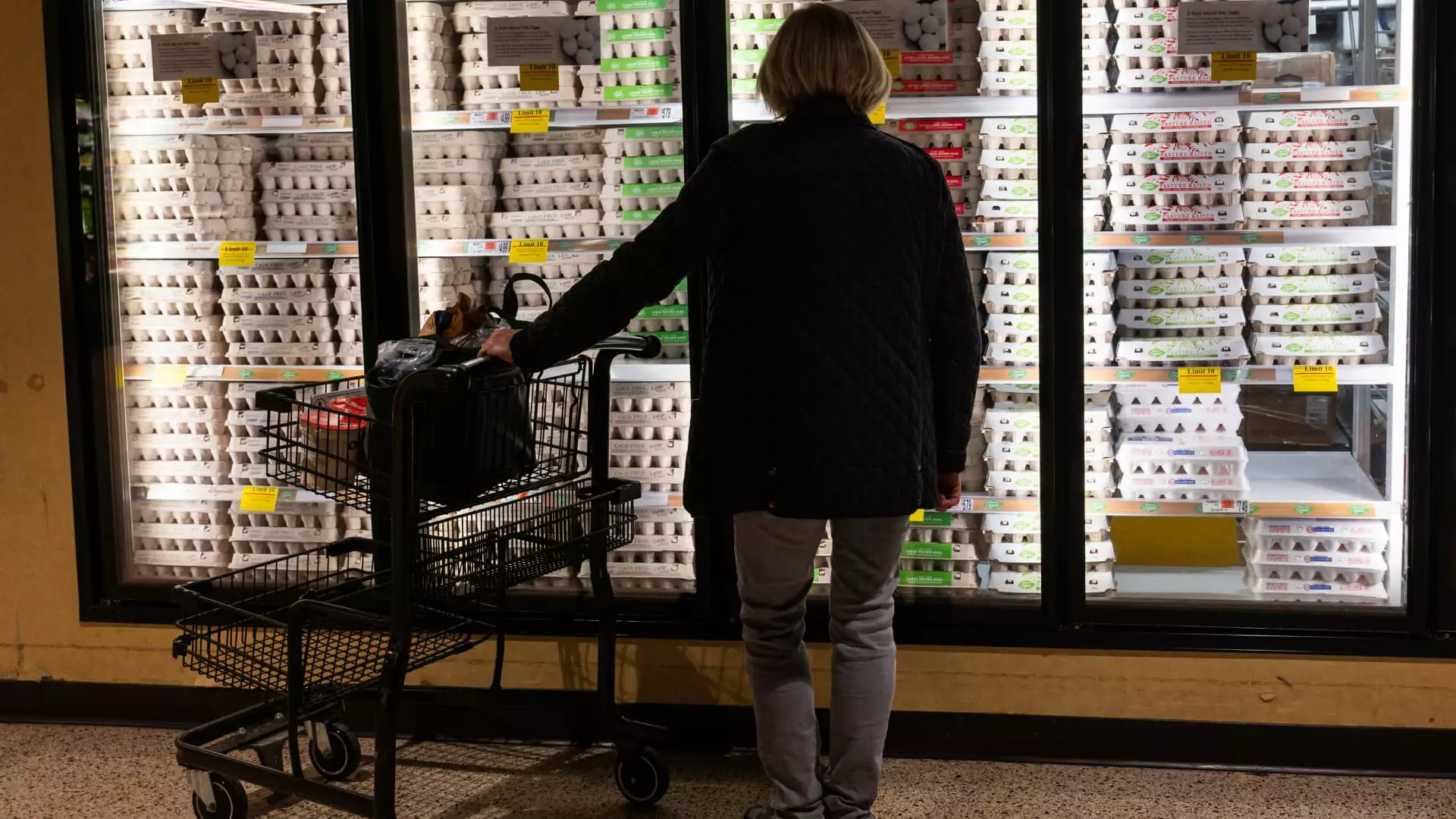In recent weeks, the wholesale price of eggs has dipped dramatically, falling from a staggering $8.58 per dozen to $4.83—a jaw-dropping 44% decline. While this sudden drop might seem like the light at the end of the tunnel for consumers beleaguered by exorbitant prices, the implications are far more complex than a mere reduction in numbers. As the price dynamics shift, the question arises: will these changes translate into meaningful relief for those who purchase eggs for their households? Unfortunately, the answer is a frustratingly uncertain maybe.
Despite the wholesale drop, consumers are still charged an average of $5.90 per dozen, which is significantly higher than the record price just a year ago. This disconnect between wholesale and retail prices is not accidental; it stems from multiple layers of economic pressures and consumer behaviors that continue to haunt the egg market, leaving many families feeling like they’re gouged at the grocery checkout.
The Lingering Fear of Bird Flu
One of the major culprits of inflated egg prices has been the persistent bird flu outbreaks that have decimated millions of egg-laying chickens. While we seem to have gained some ground against these outbreaks this March, the long-lasting psychological effects fuel consumer uncertainty. The notion that bird flu could resurface leaves a shadow over the market that impacts purchasing decisions. Fear has led households to hoard eggs, reminiscent of the early pandemic days. People rushed to stock their fridges in anticipation of rising prices, creating a false sense of scarcity. This irrational fear of inflated prices will likely keep demand artificially high even as supply stabilizes.
Supply Chain Anxieties and Retailer Practices
Adding insult to injury is the role played by retail giants who often capitalize on market fluctuations for profit, irrespective of wholesale costs. While it’s crucial for retailers to maintain their margins, consumers are stuck in a precarious position. According to industry analysts, retailers have the discretion to set prices in ways that may not closely align with fluctuations in wholesale costs, meaning the proverbial eggs will continue to be laid at a higher rate than their production costs suggest.
The U.S. Department of Justice’s ongoing antitrust investigation into the practices of major egg producers raises questions about potential price-fixing mechanisms that have long gone unaddressed. If any malfeasance is uncovered, consumers could see the ramifications well into the future, reinforcing the idea that during economic downturns, some corporations thrive by exploiting systemic vulnerabilities.
The Elasticity of Egg Demand
With Easter approaching on April 20, egg demand tends to skyrocket, pushing prices up once again. It’s a cruel irony that just as the prices might be easing, demand spikes threaten to plunge consumers back into a world of rising costs. How is it that essential goods like eggs—the very staples of American kitchens—are subject to such volatility? The holiday-related consumer pressure might extend the pain far beyond what was initially forecasted, resulting in a near-constant state of flux for egg pricing.
The Cycle of Inflationary Practices
When you zoom out, egg pricing encapsulates the broader inflationary practices that have caused consumers to feel increasingly disenfranchised. The average household that once easily absorbed the costs associated with egg purchases now finds itself in budgetary corners, navigating tightrope balances between inflationary pressures and basic nutritional needs. It’s startling that something as ubiquitous as eggs can become a marker of anxiety, fueled by market dynamics that feel increasingly disconnected from the realities of everyday American life.
In a landscape where basic commodities can swing so dramatically, it’s easy to feel hopeless. But amidst this chaos lies the potential for reform and accountability. It’s essential for everyday consumers to remain vigilant and demand clarity from producers and retailers alike. The eggs may be coming down in price, but the forces that govern their movement require accountability and reform, lest we find ourselves trapped in a perpetual state of unease.

Leave a Reply